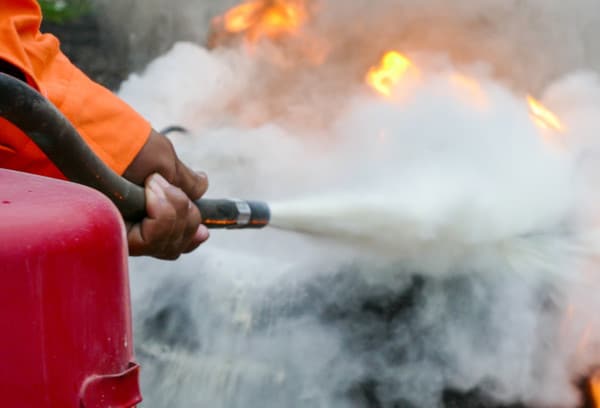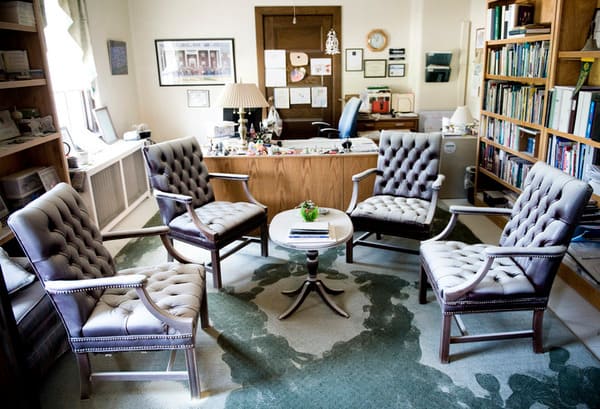Abc Fire Extinguisher Clean Up
The residue from a used fire extinguisher is not particularly toxic but avoids consumption. Spray stuck-on residue with isopropyl alcohol diluted 50 percent with warm water.

Fire Extinguisher Clean Up Dry Powder Chemical Wet Chemical Foam
They might even need more.

Abc fire extinguisher clean up. That is why we have recommended to our customers. Depending on the type of fire extinguisher used it may appear that there is nothing much to clean. Use a vacuum cleaner to clean up the powder residue or a brush to sweep it away if you do not have a vacuum cleaner.
Cleaning up after a fire a dry chemical fire extinguisher containing ammonium phosphate ammonium sulfate sodium bicarbonate or potassium bicarbonate leaves a powdery residue after it has extinguished the fireusing a vacuum you may securely remove this residue from your homeremove any larger pieces of debris that may have remained after the. Let the solution settle for about five minutes then rinse the area using warm water. Spray stuck-on residue with isopropyl alcohol diluted 50 percent with warm water.
Clean agents are electrically non-conductive non-volatile and leave no residue which makes them ideal for use. Dispose of this bag in the usual waste bin. The ABC fire extinguishers are multipurpose and use a dry chemical called monoammonium phosphate to put out A B and C fires which are described as follows.
Clean Up Dry Chemical Fire Extinguisher Residue Vacuum or sweep up loose debris. Step 3 - Finishing. Class C flames are caused by energized electrical sources.
ABC dry chem can do serious damage to delicate equipment and corrode metal especially if it is not thoroughly cleaned. If foam fire extinguishers are used any residue should be diluted and dried thoroughly. Notify the work order desk x2245 that the ventilation system needs to be shut down during cleanup.
These are the most important steps you need to follow while cleaning residue from different types of fire extinguishers. To neutralize monoammonium phosphate residue apply a baking soda and hot water paste. CLEAN AGENT FIRE EXTINGUISHERS REQUIRE LITTLE CLEAN-UP.
It is important to be thorough as mono ammonium phosphate from tri-class extinguishers like this can damage sensitive equipment if allowed to remain. If you have this type of extinguisher youll need to replace it after use or once the chemicals have become ineffective and depressurized typically at least every 12 years. Vacuum and sweep all loose powder.
Clean Up Dry Chemical Fire Extinguisher Residue Vacuum or sweep up loose debris. If any residue is stuck or left behind make a solution of 50 isopropyl alcohol and 50 water and spray it on to the affected area. Let the solution settle for about five minutes then rinse the area using warm water.
As for sodium bicarbonate and potassium bicarbonate residue apply a solution of 98 percent hot water and 2 percent vinegar. Properly dispose of the fire extinguisher powder. How do you clean an ABC fire extinguisher discharge.
If this is the case the fire extinguisher used may have been a clean agent fire extinguisher. Residue that has hardened and adhered to surfaces should be sprayed with a 5050 solution of warm water and isopropyl alcohol. Drying the area to remove any lingering moisture is all that is necessary.
Vacuum or sweep up loose debris. This is to prevent the dry chemical power spreading into the remaining building. Break down the silicone in the dry chemical agent with a 11 mix of isopropyl alcohol and water.
Wash all affected dishes as usual. Before you start vacuuming though you should first gear up in a dust mask safety goggles and pair of gloves as the fire may have created toxic fumes and dust. If you use a mono ammonium phosphate fire extinguisher also known as an ABC Dry Chemical extinguisher you will need to scrub away the residue by hand.
Once it is clean it is necessary to wash and rinse the area using a solution that contains water and soap. Let the solution sit for a few minutes wipe it with a wet cloth and then vacuum again. Class B flames are caused by liquids and gases.
To neutralize sodium bicarbonate and potassium bicarbonate residue apply a solution of 98 percent hot water and 2 percent vinegar. After this time period you can clean the surface with warm water. ABC Fire Extinguisher Labeling.
After several minutes wipe the area with a damp rag. Fire Extinguisher BC Purple-K Dry Chemical is color coded violet for identification purposes and is capable of extinguish-ing class B fires and is class C rated. Sweep or vacuum the free chemical then scrub perhaps using a strong detergent and firm brush mop and inspect to make sure no residue remains.
To treat sodium bicarbonate and potassium bicarbonate based dry chemicals mix together a solution using 98 hot water and 2 vinegar and wash the area with it. Pressurized water fire extinguishers or CO2 fire extinguishers will not leave chemical residue. Fire extinguishers are often only good for a certain amount of time.
Let the solution sit on the hardened residue for a few minutes to allow it to dissolve then thoroughly wipe it away with a damp material such as a cloth or towel. Let the solution sit for a few minutes and rinse with warm water. Sweep or vacuum up any settled residue.
Wear the protective equipment as listed above. You can sanitize those areas or spot clean any remaining residueif needed. Potassium bicarbonate is mildly alkaline and can be corrosive to surfaces that are affected by alkaline residue.
Place all the powder from the vacuum cleaner or any which has been swept up into a plastic bag and seal it. To neutralize sodium bicarbonate and potassium bicarbonate residue apply a solution of 98 percent hot water and 2 percent vinegar. Assuming your dry fire extinguisher contains standard sodium andor potassium bicarbonate you can safely clean up most of the powder mess left behind by vacuuming it.
To clean off-dry chemical ABC fire residue Guardian Fire Protection Services recommends. The article details the steps and guidelines to properly and safely clean up the residue powder left behind from the extinguishment as well as the necessary Personal Protective Equipment that may be recommended to protect yourselves from inhaling the powder or from experiencing exposure to your skin or eyes. A fan can be used to spot dry the surface.
Spray stuck-on residue with isopropyl alcohol diluted 50 percent with warm. How do you clean yellow fire extinguisher powder. Use a 98 hot water and 2 vinegar solution for stubborn residue.
Dry Chemical Clean-Up Recommendations. Neutralize bicarbonate powders with a 491 solution of hot water and vinegar 1 cup of vinegar to 3 gallons of water then rinse with warm water. Class A flames are caused by wood cloth or paper.
Let the solution sit for several minutes and then wipe with a damp rag. CLEANUP GUIDANCE A HEPA vacuum should be used for cleanups to prevent the dispersion of dust into the air. Once again allow the solution and paste to sit for a few minutes before wiping with a damp cloth.

Fire Extinguisher Cleanup How To Clean After Discharging An Abc Dry Chemical Unit Youtube

Fire Extinguisher Clean Up Dry Powder Chemical Wet Chemical Foam

How To Properly Cleanup After A Fire Extinguisher Discharge

Amerex B500 5 Lb Abc Fire Extinguisher With Wall Bracket 2a10bc Fire Extinguisher Fire Extinguisher Extinguisher Fire Extinguishers

Abc Dry Chemical Fire Extinguisher With Vehicle Bracket Inline Distributing Company

Proline 5lb Abc Fire Extinguisher With Wall Hanger Inline Distributing Company
Posting Komentar untuk "Abc Fire Extinguisher Clean Up"